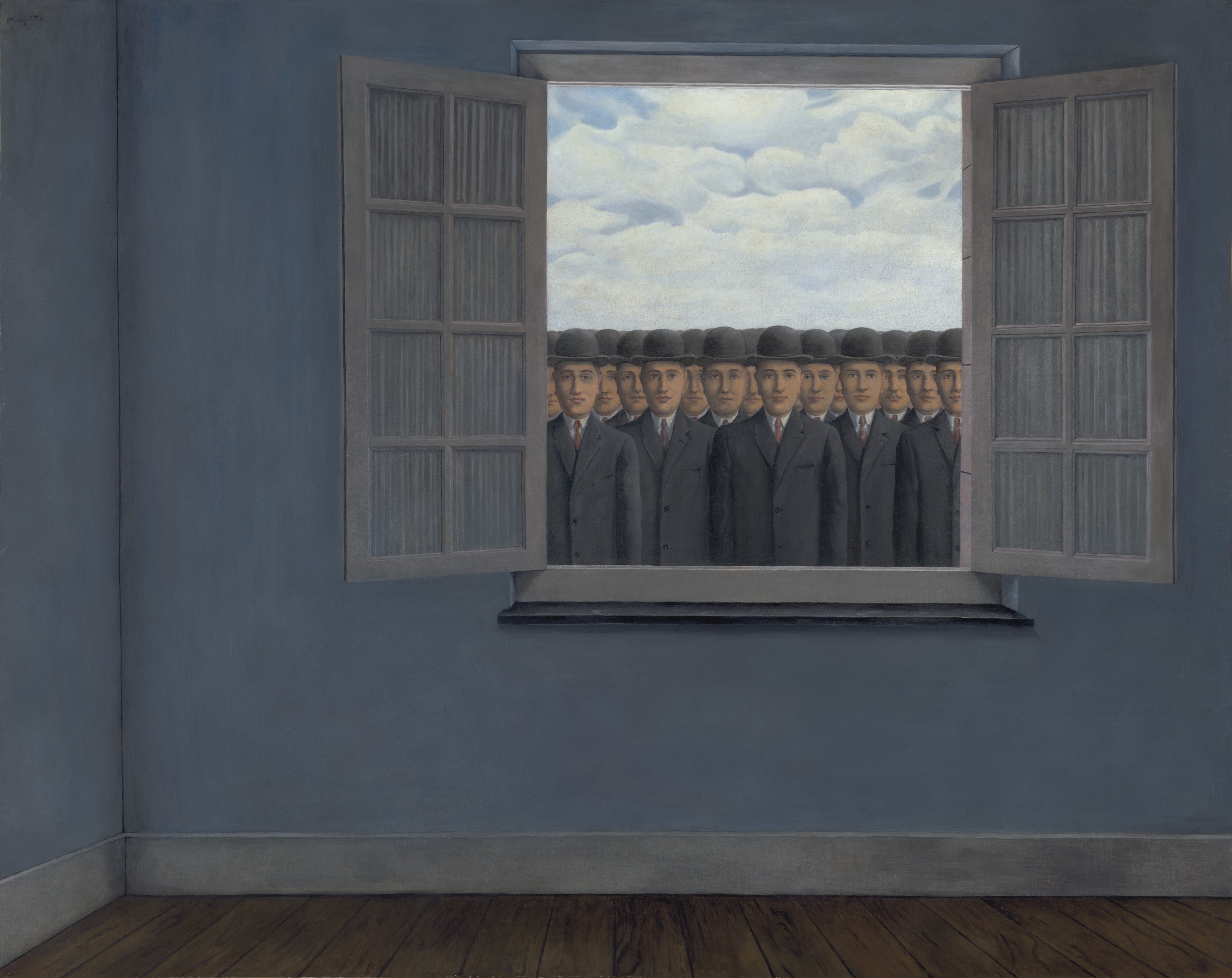René Magritte, Le mois des vendanges, oil on canvas, 51.1/4 x 63 in. (127.6 x 160 cm.), Painted in 1959, Estimate: £10,000,000-15,000,000
Three works by Max Ernst, René Magritte and Joan Miró from the Collection of Claude Hersaint, one of the most important collectors of Surrealist art in the 20th century, will lead the annual The Art of the Surreal Evening Sale. The auction will take place on 9 March 2021 as part of 20th Century at Christie’s in March 2021. Exhibited extensively, the group is comprised of Magritte’s iconic Le mois des vendanges (1959, estimate: £10,000,000-15,000,000), Miró’s Peinture (1925, estimate: £9,000,000-14,000,000) and Ernst’s Cage, forêt et soleil noir (1927, estimate: £2,000,000-3,000,000).
Claude Hersaint was born in São Paulo in 1904. He spent his early childhood in Manaus, before the family returned to Paris where he continued his education at the Lycée Janson de Sailly. In 1921, at the age of 17, he visited the first exhibition dedicated to Max Ernst at the Galerie au Sans-Pareil in Paris, and acquired his first painting. A lifelong passion for Surrealism was born and Hersaint would go on to befriend and support many artists during his lifetime, including Balthus, Victor Brauner, Salvador Dalí, Oscar Domínguez, Jean Dubuffet, Marcel Duchamp, Max Ernst, Jean Fautrier, René Magritte, Joan Miró and Man Ray, as well as Surrealist patrons, poets, dealers and art historians such as Bill Copley, Paul Éluard, Jacques Maritain, Marie-Laure de Noailles, and Jean-Louis Prat amongst others.
François Curiel, Chairman, Christie’s Europe: “It is an honour to represent the Hersaint family, for the first time at auction, in our world-renowned The Art of the Surreal Evening Sale this coming March.”
Olivier Camu, Deputy Chairman, Impressionist & Modern Art, Christie’s: “It is thrilling enough to present at auction one masterpiece of Surrealist art, let alone three. Together, these paintings illustrate the rich diversity of ideas, styles, subject matter and techniques that inspired Surrealist artists throughout the 20th century. The Magritte, one of the four largest works by the artist still in private hands, is among the most significant paintings of his entire oeuvre and focuses on the unnerving presence of the eternally enigmatic character of the bowler hatted man. The Ernst explores the mysterious depths of a dark, imaginary forest, and is one of just five forest paintings the artist created on this huge scale in 1927, three of which are now in important museum collections around the world. The Miró, also painted on a dramatically large canvas, is one of the most beautiful of his radical dream series from the mid-1920s, inspired by the work of Alfred Jarry as well as the artist’s own hunger-induced hallucinations. This painting is on a par with any of the same series by Miró in museums around the world. Each of these works represents a major creative statement by their respective artists, as they boldly explored the central tenets and techniques of Surrealism. They are a testament to Claude Hersaint’s connoisseurship and unwavering passion for Surrealism.”
René Magritte
Painted in 1959, Le mois des vendanges, illustrated page one, is one of the largest and most important works in Magritte’s oeuvre, and one of the four largest works by the artist still in private hands. Featuring the totemic, enigmatic figure of the bowler hatted man, a familiar character in the artist’s work, the painting focuses on the view through an open window, where an infinite number of these figures stand, each painted with subtle differences in their facial features. Though he usually offers a reassuring counterpoint to the surprising and sometimes shocking revelations Magritte proposes, in Le mois des vendanges, the presence of the bowler-hatted man generates the surreal, unnerving element of the composition. As his letters attest, Magritte considered Le mois des vendanges very highly, writing: “at the moment [Le mois des vendanges] is the one which best reminds us how strange reality can be, if one has ‘a sense of reality.’”
Joan Miró
Painted on a monumental scale, Joan Miró’s Peinture, of 1925, illustrated left, is among the finest of the artist’s radical and much celebrated ‘dream’ or ‘oneiric’ paintings, the series which saw him break through the boundaries of pictorial convention to reach a new form of poetic and abstract art. These works were often inspired by hallucinatory episodes induced by extreme hunger – patterns and cracks on his studio wall provided the stimulus for their creation, together with poetry and music. With these dream paintings, Miró broke with the hyper-realist precision which had dominated his work of the early 1920s, and instead began to explore an unconscious, inner world governed by instinctive subconscious impulses.
Max Ernst
Painted in 1927, Max Ernst’s Cage, forêt, et soleil noir was executed at the height of his involvement with the Surrealist movement. These works, which incorporate Ernst's newly developed techniques of grattage and frottage, feature a seemingly impenetrable wall of trees, their forms overlapping and interlocking, while a mysterious solar disk hovers in the sky above. Having grown up on the edge of a forest in Brühle in the Rhineland, the motif had come to represent a labyrinth of mystery, danger, darkness and possibility within Ernst’s imagination. In the foregournd, a small bird (a possible alter-ego for the artist) is trapped within a small cage. Cage, forêt, et soleil noir is one of just five forest paintings the artist created on this huge scale.
René Magritte, Le mois des vendanges, oil on canvas, 51.1/4 x 63 in. (127.6 x 160 cm.), Painted in 1959, Estimate: £10,000,000-15,000,000

